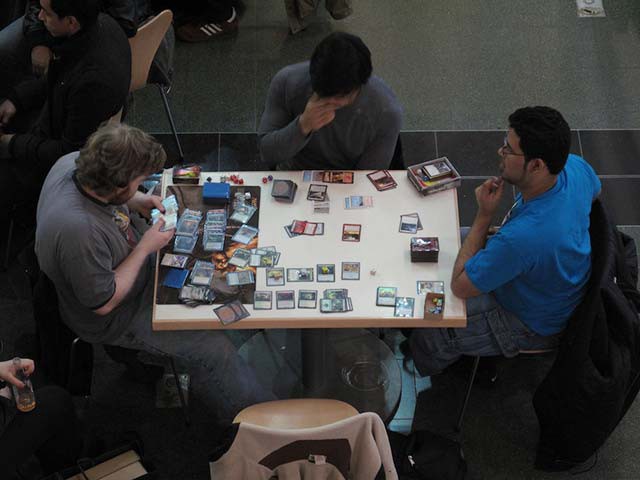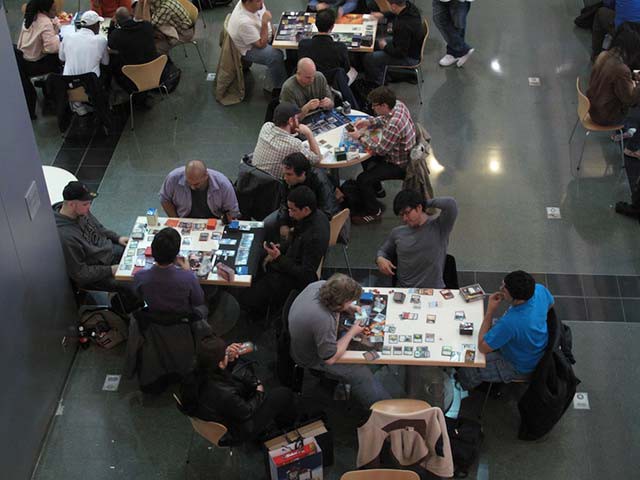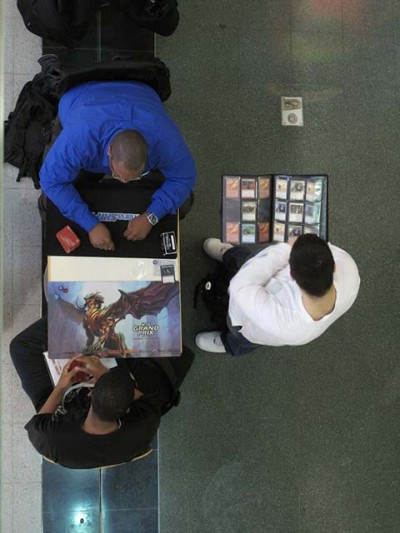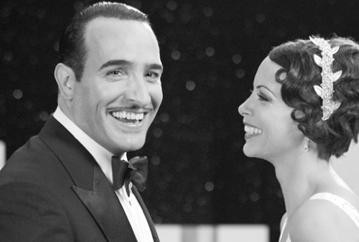Romney Shocker: Rich Man Stays at Decent Hotels!

Here are the shocking revelations about where Mitt Romney slept in January while campaigning, according to the fine people at Think Progress, who themselves sleep in biodegradable hovels. Uh, the Empire Hotel doesn’t even make the list of the best hotels (or most expensive hotels!) in New York. And there’s basically nowhere else to stay in Palm Beach except the Breakers. Even I’ve stayed at the Omni Parker House in Boston! This is one of those topics on which the media is not equipped to advise us. All hotels look expensive to the LIBERAL MEDIA.
The campaign also spent $60 on a Best Western in Arizona, by the way. And a bunch of rooms at a Courtyard Marriott in Bethesda! The Embassy Suites in Memphis and Des Moines! (Also: $9.52 at a Burger King in Miami. And $11 at a Chipotle in Denver!) And, way more interesting: why is the campaign spending so much with Go Daddy (looks like thousands of dollars), and racking up so much expense in “bank fees” to American Express? Looks like someone’s letting the poor people handle the banking too.
Oh Bituminous Blast! At Midtown's 'Magic' Gathering
by Noah Davis

Remember Magic: The Gathering? It was a game very popular in the ’90s, and if you were like me, you may have spent hours in your bedroom, the sounds of Nirvana or Soundgarden bouncing off the walls around you, flipping through your cards. But then it might have gotten too expensive (a pack of 15 cards went for something like five bucks then, which doesn’t sound like much except you were 16, had virtually no income and always needed more, more, more cards to compete) — or maybe you just moved on. But if you didn’t know, the game has been enjoying a recent resurgence, and if you need proof, you need only go to Citigroup Center, in Midtown, on a Monday night to see it.
There, in the plaza’s atrium, you’ll find about three to five dozen players, most of them guys, their ages usually between 20 and 40. This complex is a generic type of space, as close to an indoor suburban mall as you’ll find in Manhattan. A Terry May Concept Flowers and a 24 Hour Fitness Derek Jeter Signature Club overlook the atrium. Other people sharing the area use the free WiFi, take Kaplan prep tests, play speed chess, or talk intently on their iPhones, but the members of the loosely affiliated group focus on the expensive, colorful pieces of cardboard that lie in varying orientations in front of them. Brows are furrowed intently as the players process their thoughts: Is it smart to flashback Lingering Souls now? Or better to wait? A few observers stand, bouncing nervously from foot to foot, then table to table, between matches. Right here, right now, Magic is back.
The game, developed by Whitman College mathematics professor Richard Garfield, has been distributed since 1993 by Wizards of the Coast. It popularized the collectible trading card craze of the mid-90s. The game’s special appeal came from how it combined the tactile realness of baseball cards with the fantasy world of Dungeons & Dragons. Back then, I played every few weeks with my two best friends. Occasionally, we went to a card shop on Friday nights where we’d cram into a back room with other MTG aficionados who ranged in disposition from very nice to pretty sleazy. The space, generally, had the nice community feeling you would expect from a group of outsiders bonding over a common interest.
It was a simple game. (Over the years, it has become more complex but the general guidelines remain the same.) Each player starts with 20 life points and a deck of cards. There are five colors — black, blue, green, red, and white — each with their own cards and characteristics. Wizards or “Planeswalkers” (individual players) cast spells (play cards). Some are creatures that can attack and defend. Others takeaway life points, hurt or aid creatures, or produce one of many other outcomes. The first person to reduce his or her opponent’s life to zero wins.
The success of Magic spawned many imitators including the Garfield-designed Vampire: The Eternal Struggle and card versions of Star Wars and Star Trek, but the original game remained the most popular. It built momentum quickly due to the simplicity of gameplay and the increasing value of the cards. WotC released frequent expansion sets as a way to keep interest from flagging.
Inevitably, however, it did. The older generation of players gave it up due to cost new interests, and other commitments, while potential younger ones were consumed with Internet memes or priced out. The room in our collective cultural space for cardboard cutouts grew smaller and smaller.
But Magic never quite died. It continued chugging along, loved by enough members of a certain subset to stay afloat. (There has been, perhaps absurdly, a Pro Tour since 1996, featuring payouts of up to $40,000 for the winner.) Fast-forward nearly 20 years since its inception, and the game — inspired by nostalgia, new rules and strong expansion sets — is experiencing a renaissance. In late 2011, Hasbro, the toy company that purchased WotC for $325 million in 1999, claimed that Magic had 12 million players, an 80% rise over 2008. Sales doubled over the same period.
Which brings us back to 53rd Street. The Monday night meet-up is one of the many places around New York where people assemble to play. Most gatherings (puns!) are held in card shops or other places that charge participants a small fee or subtlety pressure players to purchase cards, but this one is relaxed by design.


“I think our success has much to do with my mission of creating a venue where players could enjoy their already exorbitantly expensive hobby in a no-fee, no-spending-obligation setting,” Matt Albrecht, a writer living in Brooklyn who planned the first event, wrote in an email. “This is the way I played Magic back home in the Midwest at my local game store (in a sort of Freemium setting, I suppose you’d say), and I aimed to bring that ‘keep business out of our hobby’ mentality to New York. I’ve been very dogged about that, much to the chagrin of certain enterprising entities.”
Albrecht is the originator and nominal coordinator, but the meet-up has outgrown his facilitation. In fact, inquiries into his whereabouts on the two nights I attended were met with quizzical looks and statements such as “I question the legitimacy of this organizer.” The loosely affiliated group has a momentum all its own. Between 40 and 60 people arrive every week, and the number keeps growing. It is a place where people of all shapes, sizes and ethnicity come to play a game they love.
While on the nights I went the attendees were almost entirely men, women are welcome as well. On one night, the lone female player sipped Dunkin’ Donuts coffee and argued that Giants were going to lose the NFC Championship if Eli Manning played conservatively. Caffeine ingested, she tossed her cup into a nearby trashcan and whipped out a Magic deck encased in blue-backed plastic sleeves.
When I returned a few weeks later, the Giants were Super Bowl champions. The group in the atrium was larger — one person credited the growth to the recent release of a new set — but inclusive, friendly, non-competitive nature remained the meetup’s key feature. There was no judging, no cliques, no rolled eyes at bad fashion sense. (Bad play, however, earned appropriate scorn.)
“There can be some neckbeards who are awkward and awful [at other gatherings], but the people here are just the normal nerds,” Vasu Balakrishnan said during a break between games with his friend Josh Harris, a freelance writer working on a novel.
Balakrishnan wore a button-down shirt, a tie — there are a surprising number of ties among the players — and the security clearance keycard from his software design job. He began coming three or four months ago. Like many of the people present, he started playing as a teenager but gave up the game when other parts of his life intervened. Balakrishnan returned to Magic in college after a broken wrist forced him off the Carnegie Mellon rowing team. As he played, he displayed the same manic energy that characterizes many players in the room. When it was not his turn, Balakrishnan ceaselessly shuffled the cards in his hand. When he got to go, he made moves quickly and authoritatively, almost seeming to start the next phase of his turn before completing the previous one.
There is no formal hierarchy or ranking of players at the meetup, but Balakrishnan and Harris are skilled combatants. They know all the rules (harder than it sounds) and understand how the cards interact with one another. “Bad players literally don’t read the words on their cards,” Balakrishnan said, appalled at the gall of these unseen offenders. When he and Harris play each other, they don’t need to speak because they understand their opponent’s move. At the end of the month, Balakrishnan and Harris, who wore a bright yellow “Goucher Athletics” tee shirt, will head south to play in the Magic: The Gathering Grand Prix Baltimore. Neither expects to win — Balakrishnan finished 296 out of 1,435 at a similar tournament in Pittsburgh — but winning isn’t the point. While Harris enjoys playing competitively because “it’s more fun,” he understands tournament play is not a lucrative option.
“There are some people who can sort of make a living, but there’s not a lot of money it in,” he said. “It’s not like poker.”
Or, put another way by his buddy Balakrishnan, “The very best pros don’t lose money.” And of course on Monday nights they can play here for free. The space is plain and barren, but that’s fine. The group does not require much.
“There are plenty of tables with four corners. What else do we need?” said Paul Narula, an editor and writer who started playing Magic again after making some extra money playing poker. “The tables are kind of messy but it’s okay.”
Some players set their individual cards, already encased in plastic sheaths, on rubber mats that depict dramatic fantasy scenes. I suggested he could bring one of those.
“Nah, I really don’t need to protect my plastic. And you…” he said, indicating his friend sitting one seat over.
His friend, Danny Hobbs, shrugged in response. About the pile of nicked cards in front of him, he said, “I really don’t give a fuck. It’s cardboard.” It’s an ironic statement given that he likely owns thousands of dollars worth of Magic cards. Hobbs has been playing since 1993 and never stopped. Some singles from the early sets are valued at $200 and up. Hobbs, a quiet 20something in a baggie Ecko hoodie, demurred when I inquired about the value of his cardboard portfolio but Narula answered for his tablemate: “He doesn’t pay attention to them, but he does.”
In some ways, Hobbs’ attitude — which I suspect is genuine but also contributed to by shyness, modesty, and an understandable unwillingness to reveal the true worth of his assets — symbolized the entire ethos of the meet-up. Money quickly infiltrated Magic, commoditizing the game and altering the motivations for playing and collecting. On their own time, some of the players in the atrium profit through buying and selling, wheeling and dealing, but such behavior is discouraged in the space. Claiming there’s a purity of play at the meetup would be a ridiculously overblown statement, but nevertheless there was a nice come-one, come-all attitude about the room. I easily wandered in and out, observing the games and chatting with the players. Mostly, the people gathered in the room simply wanted to spend time doing something they enjoyed. So they played their spells; they used iPhone apps to track life points; they paged through binders filled with precious reserves of cards. It hardly seems a lot to ask.
As I walked out, I noticed two youngish women in black tights and sweat-stained cut-up tees standing on the second-floor balcony outside Jeter’s 24-hour house of fitness. Their eyebrows were arched in the staple expression of the “cool kids” in every high-school movie. Down below, the card players continued their game — if they’re nerds, they’re in the comfortable position of being done with high school, free to do their own thing.
Related: The Bronies Take Manhattan and Why Will Leitch Burned All His Baseball Cards
Noah Davis has a bunch of dual lands he’s looking to sell.
Eric B. & Rakim, "Eric B. Is President" (Or He Was, Twenty Years Ago)
Happy President’s Day. I hope you’re not at work. But if you are, stop what you’re doing and let Eric B. make you clap to this vintage clip of him and Rakim performing on “Yo! MTV Raps” in 1992.
Cloud Cool
Do you know what lenticular clouds are? “Lenticular, or lens-shaped, clouds form near mountains, where the rising air condenses to form the clouds, and the wind gives them their shape.” There is an absolutely amazing one that appears 11 seconds into this time-lapse video of the southwest by photographer Tony Rowell. You should stick around for the rest, it’s all pretty great (except for an appearance by the stupid moon), but at least check out that cloud.
Some Other Conversations With A Fact-Checker
Some Other Conversations With A Fact-Checker
by Jeff Johnson

The publication of The Lifespan of a Fact, which is based on seven years of email exchanges between writer John D’Agata and fact-checker Jim Fingal, has prompted a lot of thoughtful discussion (an excerpt from the book ran in this month’s Harper’s). Unmentioned up till now, however, is that while D’Agata was emailing with Fingal, he also was engaged in a tense exchange with another fact-checker charged with readying one of his essays for publication. It was to be an epic piece of writing: concerned with the depletion of Lake Michigan’s resident sturgeon population due to faulty Federal government practices, the essay also included relevant meditations on the Oneida Indian tribe, ATM skimming devices, the BP oil spill and the Chicago Cubs. This was to go into a limited-edition magazine, Room Service, which was going to be printed on thin birch slats and distributed in André Balazs’ network of hotels. Though the magazine was never published, we were able to procure the correspondence between D’Agata and Darren, the fact-checker interning for a semester (for no credit) in the basement of the Chateau Marmont.
Darren: Hi, John. My name is Darren, and I’m the intern at Room Service that will be fact-checking your piece. It was a thrilling read. My concern is that the Chicago Cubs didn’t win the World Series in 1987.
John: “Piece?” I’m afraid I’m not sure I know to what you’re referring. Little help?
Darren: Hmmm. The essay you wrote for us. It’s great. 🙂 There are just a few questions.
John: Oh. Essay is… better? I prefer to think of what I do as an experience. At a minimum, I expect five-sense engagement with any competent reader. I’m talking taste buds. Smell. Otherwise I should hang it up. Or you should do some better reading. Either way, you won’t need to fact-check this, uh, “piece.” How adorable. Print it or kill it.
Darren: Maybe we can compromise? Everyone here wants to print it.
John: Is English really your first language?
Darren: Yes. (???) About this Cubs thing, should we not just admit the Minnesota Twins won it all?
John: As I said, that’s not a big deal. The “piece” (gag me) is just more dramatic with the Cubs winning it all. Can you feel the wave of relief that would wash over the city if this happened? It’s important for me to give that to the people of Chicago. To grant them that.
Darren: I’m thinking that they probably can’t really enjoy that since it didn’t happen.
John: That’s a detail that no one cares about.
Darren: Okay. So, regarding the fire that both teams played through, at Wrigley Field, that carried on for two games, I found no evidence of that either.
John: I’d be really upset right now if that was my problem. It’s yours. Own it. Try it on like rubberized fishing waders.
Darren: I can’t imagine anyone would let them play through it. I did find that in September of 1987, fire trucks were called to an apartment located what looks to be a few blocks away from the ball field. Ultimately that was reported as smoke from a burnt piece of toast, and no damage was done. And that would have been weeks before the World Series that the Cubs did not play in.
John: Until you’ve been near a fire, don’t presume to know the fear that hangs as heavily in the air as the smoke it produces. This fall classic was played under the threat of real uncontrollable fire. And the wooden bats… the objects these men swung to earn a living, were among the most tempting to the fire’s kiss.
Darren: I will concede that if the burnt toast somehow produced a fire that then engulfed the apartment, and the apartment building, and went into the street, and if there were tens of thousands of gallons of an accelerant poured into the street and contained there, almost like a canal, which led directly into the stadium, and into the dugouts near the wooden bats, it would be lethal. Especially if the city just stood by and did nothing, and did not have a functioning fire department, or had a fire department, but they somehow put all of their trucks on the interstate and drove them at high speeds to, say, South Bend, Indiana, and ignored the fire, and everyone on the Chicago Cubs, and the Miami Dolphins (who are a football team by the way, and have never been in a World Series) just stuck around, yes, it would be dangerous.
John: You’re right. As I pointed out in my essay, the Chicago Fire Department didn’t come because it was Easter Sunday.
Darren: I’m pretty sure that the CFD has to work on Easter. At least some of them.
John: Oh, you know this? Who’s getting loose with the facts now?
Darren: Well, the World Series is not played on Easter.
John: Duh. But in my mind it was crucial that people in the stands were wearing bonnets and seersucker. Face it, my gift doesn’t recognize your calendar.
Darren: And they never played a doubleheader in the World Series of 1987. You say the fire lasted for two games.
John: Readers don’t care about this. They will never question it.
Darren: And the a-ha “Take on Me” video was not… I haven’t found any confirmation that it was inspired by the Chicago Cubs. The guy ramming into the cartoon walls does not burst into the stadium and put out the fire. These guys were from Norway. And the song came out well before 1987.
John: Oh, well, a woman at a bar told me that. She once slept with an MTV VJ who told her all about the video’s earlier cut, that, in fact, included such a scene.
Darren: Do you have her name?
John: No. I never ask people their names. That’s so stupid. People clam up when you ask shit like that. I am not a reporter.
Darren: Liz Phair didn’t throw out the first pitch that day.
John: No one cares. She had her finger on the pulse in Chicago at that time and, as a stylist, that’s a collage I am allowed to paint. Liz Phair, The 2nd Chicago Fire, The Cubs, a boy who built a hot air balloon that runs on vomit.
Darren: I don’t think we can get away with this. Liz Phair wasn’t popular until later.
John: Is it harmful? No. Lives might even be saved.
Darren: The band Styx did not turn the Chicago River into the River Styx once a year to perform “Sailing Away.”
John: How does that make you feel though? Good, right? Like a sexual act that includes a Banana Split?
Darren: People at nursing homes were not released into the wild to forage for Polish sausage.
John: Small liberties.
Darren: Barack Obama did not play Cameron in Ferris Bueller’s Day Off. He did not help Ferris catch a foul ball. Neither of them had sex with Mae West.
John: They couldn’t even find his real birth certificate, right? Everyone writes his own autobiography.
Darren: They did not drive to the game with Steve Bartman.
John: We’re done here, Darren. You print it or I take it somewhere else. As a chapbook, I think I could get low six figures.
Darren: You did get the color of Bartman’s turtleneck right.
Related: What It’s Really Like To Be A Copy Editor
Jeff Johnson wants to meet for coffee and hear about your concerns. Find him here.
Fake Meat Real Gross
“To produce the meat, stem cells are placed in a broth containing vital nutrients and serum from a cow foetus which allow them to grow into muscle cells and multiply up to 30 times. The strips of meat begin contracting like real muscle cells, and are attached to velcro and stretched to boost this process and keep them supple. At the moment the method produces meat with realistic fibres and a pinkish-yellow tinge, but Prof Post expects to produce more authentically coloured strips in the near future.”
— The first hamburger to be grown in a tube will be served this year. Who’s hungry?
Wait, Did People Really Think 'The Artist' Was a Good Movie?

So… basically The Artist is about this chick who meets a much older guy like three times for all of 30 seconds each and then she devotes her life to stalking/saving him, despite him being a married, entitled, pitiful, self-serving alcoholic, and despite her being a smart, savvy, talented, sexy professional, and then also the only black people in the film are literally carrying spears and wearing loincloths? And really hot French guys are actually made kind of ugly when they have gross tiny mustaches?
Right, that’s what I thought, just checking.
Absolutely Everything About 'The Loser'
“The Loser, so well known for its irregularities, is a surprisingly good example of the traditional novel devices of character grouping and gradation and plot and subplot, albeit so forced and exaggerated as to make them instances of what I call stressed form; that is, the form is stressed to the point of implausibility.”
— Here are way more thoughts about how Thomas Bernhard’s The Loser is constructed than almost anyone needs to read. (via)
Die, Adorable Alpine Chipmunk, Die!

One of the cool things about the West and the Southwest is that lots of species get pooled and segregated into little genetic pools — at the top of isolated mountains, squirrels that once roamed and mingled now have been separated for ages, like the nine sub-species of Abert’s squirrel. Now at Yosemite, the Alpine chipmunk is being forced to ascend uphill as well, into isolated genetic pods. Radical lesbian elitist climate change atheist publication Nature Climate Change reported the details on how “global warming” is forcing the squirrels ever upwards. Climb, chipmunks! Climb for your lives! (Picture: a detail from a photo by Miss Pudding.)
